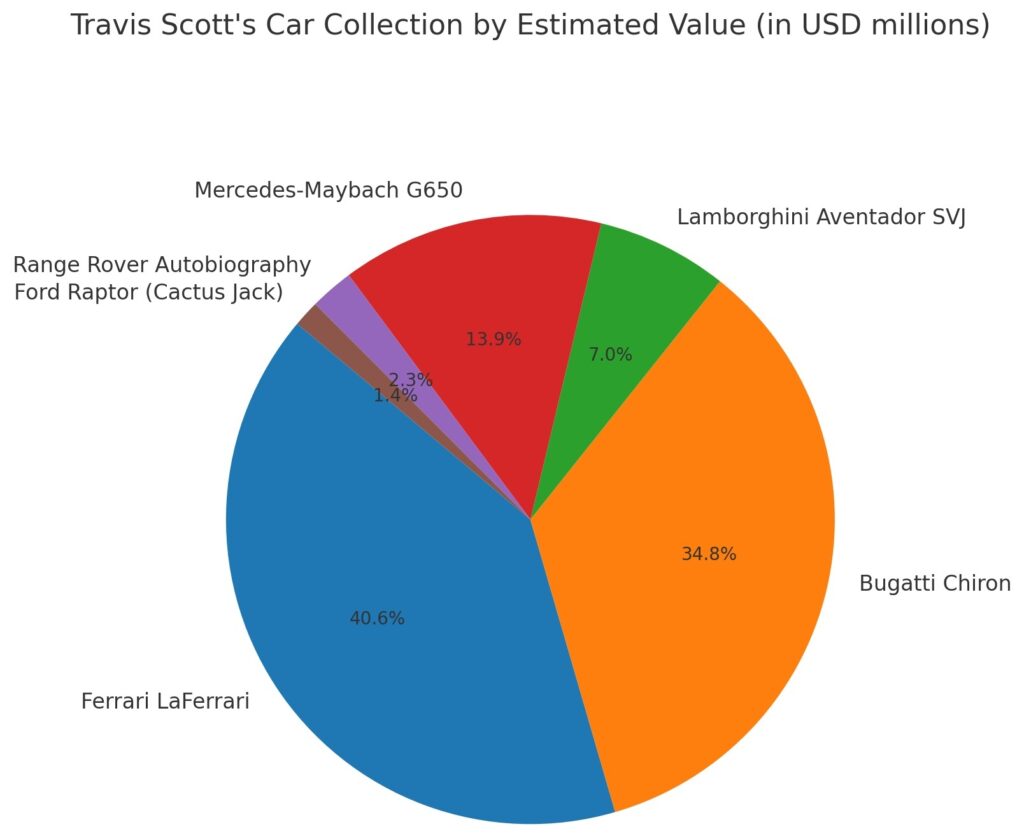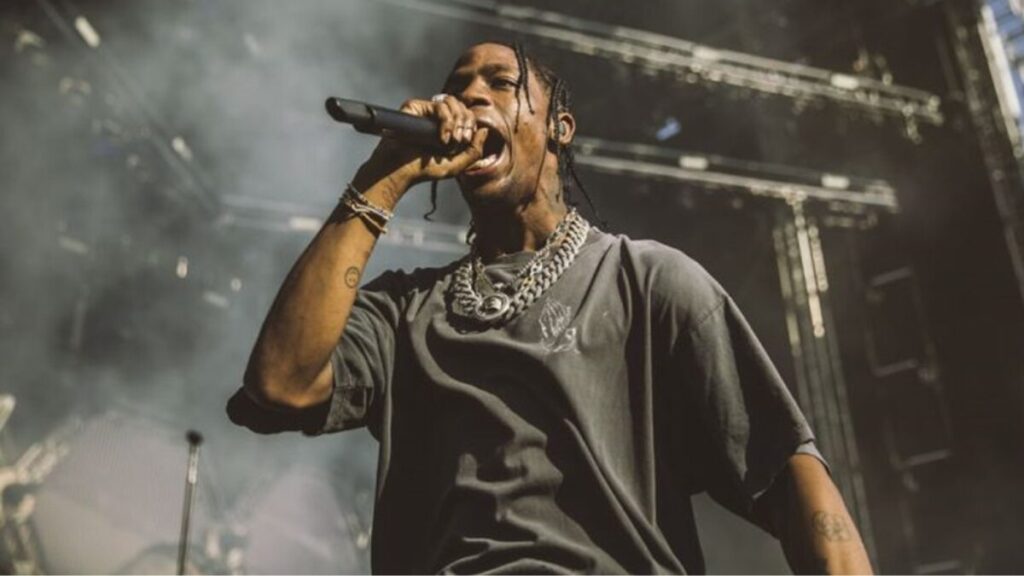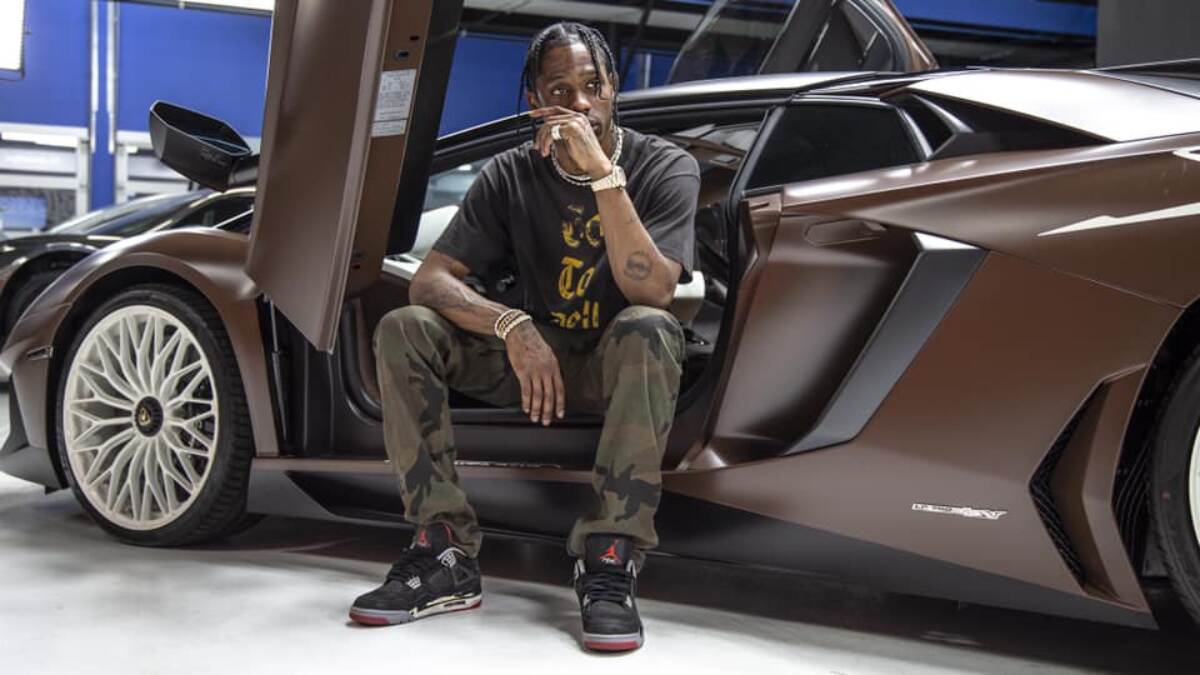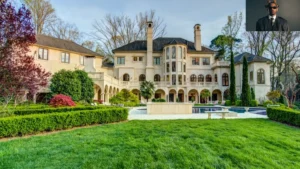When most people hear Travis Scott, they think of sold-out stadiums, blazing visuals, and trap beats that redefine gravity. But behind the autotune and Astroworld theatrics lies a quieter, more calculating figure—one who’s been building an empire in real estate, rare cars, and brand-backed investments that rival hip-hop’s most seasoned moguls.
With a reported net worth in 2025 surpassing $80 million, Travis Scott has transcended the rapper archetype. His lifestyle isn’t just flashy—it’s layered with intentionality, from a $23 million Brentwood mansion carved into a hillside to a hand-curated collection of luxury supercars that wouldn’t look out of place in a private museum. Factor in global brand collaborations, his record label, and speculative stakes in emerging tech, and you begin to see the bigger picture.
So, how rich is Travis Scott? And more importantly, what kind of rich is he? This deep dive goes beyond the headlines to unpack the taste, tactics, and calculated risks shaping his luxury portfolio. Because in a world full of flexes, Travis Scott plays a different game entirely—and it’s time we paid attention.
Desert Fortresses and Hidden Hills Havens: Inside Travis Scott’s Property Picks
The $23 Million Brentwood Marvel
Perched on a ridge in the hills of Los Angeles, Travis Scott’s $23 million Brentwood mansion is less of a house and more of an immersive experience. Designed by LA-based architect De Loren & Associates, the residence is a brutalist-meets-modernist wonder—monolithic in form but sculptural in detail. Think concrete planes, glass walls, and steel finishes that echo the dark, industrial edge of Scott’s musical aesthetic.
Spread across 17,000 square feet, the home features floor-to-ceiling windows with sweeping canyon and ocean views—uninterrupted by neighboring homes thanks to its hilltop position. But the real showstopper? An underwater, glass-encased theater, allowing guests to watch movies as sunlight ripples through the surrounding infinity pool. There’s also a gym, sauna, wine cellar, and a sleek auto gallery that looks more like an art installation than a garage.
This isn’t just another modern celebrity mansion. It’s a statement piece—raw, curated, and unmistakably tailored to Travis’s brand of dystopian luxury. While it checks every box of a Los Angeles luxury home, its architectural audacity suggests more than a flex. It’s a long-game asset—a blend of personal vision and market-savvy investment that mirrors how Travis moves across all his ventures.
Hidden Hills Compound: Space for Stormi and Style
Nestled behind the gates of one of LA’s most elite enclaves, the Travis Scott Hidden Hills house offers more than privacy—it provides a carefully curated environment for both family and creativity. Tucked between winding drives and tree-lined lots favored by A-listers, this sprawling estate—rumored to sit near Kylie Jenner’s Calabasas property—blends minimalist architecture with cozy, livable warmth.
It’s not just a hideout from the spotlight. With open studio spaces, expansive outdoor lounges, and a family-friendly layout, this home reflects Travis’s evolving identity—not just as an artist, but as a father. For Stormi, there’s room to roam. For Travis, it’s a sanctuary to think, build, and retreat.
Among celebrity homes in Calabasas, few balance form and function this seamlessly. Here, the flex isn’t square footage—it’s intention. It’s the kind of home where a rapper’s family life privacy isn’t a luxury; it’s a necessity for legacy.
Real Estate as a Flex and a Strategy
Travis Scott’s property moves aren’t just about curb appeal—they’re calculated plays in a broader celebrity real estate portfolio. His acquisitions, from the futuristic Brentwood mansion to his Hidden Hills residence, show a duality: bold architectural statements that also sit in ZIP codes known for skyrocketing equity.
Insiders have speculated on additional Travis Scott property investments, including a possible development in Houston, his hometown and emotional anchor. If true, it would reflect a deeper investment in identity, not just returns.
In the current era of rapper real estate strategy, homes aren’t just homes—they’re brand extensions, production studios, and safe zones from an always-on public. Travis’s choices signal both lifestyle and legacy: homes designed for now, positioned for future value.
It’s a modern mogul move—trading flex-for-the-gram purchases for properties that carry cultural weight and long-term financial traction.
Chrome Dreams and Bulletproof Style: A Peek into Travis Scott’s Car Collection
Notable Rides with Swagger
When it comes to celebrity car collections, Travis Scott doesn’t just park power—he curates personality. His Ferrari LaFerrari, valued at over $3 million, isn’t just a hypercar—it’s a flex of rarity, performance, and exclusivity. With only 499 produced, it places Travis in a class of collectors where musicians, athletes, and billionaires overlap.
Then there’s the Bugatti Chiron, a machine more often seen in private collections than on Sunset Boulevard. Sleek, brooding, and tailored to his visual brand, it’s a natural extension of the man behind Utopia.
In a culture where rappers’ luxury cars often lean flashy, Travis opts for statement vehicles that whisper legacy over loudness. Each ride—whether a custom Maybach or military-toned Lamborghini—feels like it belongs in a museum curated by a music futurist. These aren’t just fast cars. They’re rolling proof that Travis Scott’s Ferrari and fleet say as much about vision as they do about value.
Astroworld on Wheels: Personalized Mods and Aesthetic Choices
Travis Scott doesn’t just drive cars—he brands them. From muted matte finishes to apocalyptic textures, his vehicles channel the same dystopian surrealism that defines the Astroworld aesthetic. His rides often appear in music videos and tour visuals as part of a larger, cinematic universe—more prop than transport, more sculpture than sedan.
Custom paint jobs, flame-dipped details, and military-green finishes have become signatures of his fleet. There are even moments where his outfits are color-matched to his cars, reinforcing his image as both trendsetter and tactician.
While he keeps tight-lipped about his auto collaborations, rumors of behind-the-scenes builds with West Coast Customs have circulated online, further linking Travis to the world of custom car wraps in hip hop. Whether it’s a lavender Lambo or a camo-toned Range Rover, each modification feels intentional—a remix of luxury and rebellion, much like his music itself.

The Car Collector vs. The Investor
Travis Scott’s garage may look like the fantasy of a gearhead with unlimited funds, but there’s an argument to be made: it’s also a portfolio in motion. With models like the collectible Bugatti Chiron and a Ferrari LaFerrari—both of which have appreciated since their release—Travis straddles the line between enthusiast and investor.
In today’s market, supercar investments aren’t rare. Limited-production models often command higher resale values, especially when tied to celebrity ownership. While Travis’s aesthetic leans personal—matching paint to mood boards, wrapping vehicles in earth tones or industrial finishes—the choices may be more strategic than they appear.
Experts note that celebrity car value often spikes at auction, particularly when the vehicle carries a narrative. And for a figure like Travis, whose brand thrives on curated mystique, every car tells a story—and potentially, turns a profit. In his world, flex and foresight often ride in the same seat.
From Cactus Jack to Corporate Jack: Travis Scott’s Business Empire
Brand Partnerships That Print Money
Travis Scott doesn’t just collaborate—he transforms brands. His 2020 McDonald’s collaboration wasn’t just a menu drop; it was a cultural reset. The “Cactus Jack Meal” led to supply shortages, drove a spike in Q3 earnings, and reportedly pushed Travis Scott McDonald’s meal sales into the tens of millions. From fast food to fast fashion, his influence turns product into phenomenon.
Then there’s Nike—arguably his most potent partnership. With each sneaker drop, from the Air Jordan 1 to the Cactus Jack AF1, resale values have exploded, routinely fetching five to ten times retail on secondary markets. The Nike Travis Scott resale value now rivals collabs from Kanye and Virgil Abloh, cementing his status in sneaker royalty.
What sets these deals apart? Authenticity. Travis doesn’t just slap his name on a product—he builds an immersive aesthetic around it. These celebrity brand deals work because they feel like extensions of his universe, not corporate detours. In a sea of influencer noise, Travis makes brands feel rare again.
His Stake in Culture: Record Label, Creative Ventures, and Merch
Cactus Jack Records isn’t just Travis Scott’s label—it’s a creative compound built to expand his cultural orbit. Founded in 2017, the label has become a launchpad for genre-bending artists like Don Toliver and Sheck Wes, offering more than studio time. It’s mentorship, aesthetic alignment, and brand synergy wrapped into a single entity—proof that rapper-owned labels can evolve into full-fledged media engines.
But music is just the base layer. Through Cactus Jack, Travis has pushed visual art, experiential merch, and multimedia storytelling. The Astroworld rollout wasn’t a traditional album campaign—it was a branded universe, complete with carnival themes, pop-up events, and surreal stage design. His Travis Scott merch drops, often limited and art-directed, routinely sell out in minutes and fuel secondary markets with cult-like energy.
What he’s built isn’t just a business—it’s a blueprint for artist-owned culture at scale. From beats to billboards, Travis controls the narrative, proving that ownership isn’t just financial—it’s creative.
Silent Plays: Tech, Fashion, and Beyond
While Travis Scott’s headline deals dominate the spotlight, his quiet moves may be just as strategic. Though rarely confirmed, whispers of Travis Scott startup rumors have circulated in fashion tech and gaming spheres—industries where cultural currency is as valuable as capital.

Insiders speculate that Travis has aligned with early-stage fashion collectives and digital platforms bridging streetwear and blockchain. Given his keen eye for hype cycles and drop culture, it’s not a stretch to imagine him as a fashion VC rapper, backing the next GOAT or StockX. In gaming, his Fortnite concert wasn’t just an event—it was a proof of concept. Since then, his name has surfaced in discussions around metaverse integrations and immersive audio platforms.
While many celebrity tech investments follow trends, Travis seems to chase future aesthetics—where culture, commerce, and interactivity intersect. He’s not just endorsing brands; he’s sourcing blueprints. And in a world pivoting toward virtual luxury, Scott’s silent plays may turn out to be his loudest wins.
In His Orbit: What It’s Like Experiencing Travis Scott’s Lifestyle
The first time I stepped into Travis Scott’s world, it didn’t feel like a party. It felt like a portal.
It was an invite-only launch event for Utopia, set in a private estate tucked somewhere above Mulholland. The gate alone was taller than most houses I’ve lived in. Security didn’t smile, and the air smelled like smoke, incense, and money.
Inside, the lights were low and red, flickering against raw concrete walls that matched the finish on his Aston Martin parked—indoors, of course—beneath a skylight. The music wasn’t blasting; it oozed. You felt bass in your ribs before you heard it. Somewhere between the LED-lit pool and a velvet-paneled listening room, I realized this wasn’t built for show. It was built for mood, for narrative, for immersion.
I spoke to one of his stylists, who told me Travis doesn’t approve a look—or a location—unless it “feels like a movie.” The same applies to his homes, his cars, and his merch.
That’s what people don’t always get: Travis Scott’s lifestyle isn’t loud. It’s layered. Controlled. Cinematic.
You don’t just witness it. You step into it—and for a moment, you lose track of where the real world ends and his begins.
Flexing Like the Greats: How Travis Scott Compares to Hip-Hop’s Wealth Elite
Jay-Z, Kanye, and the Art of Diversification
In the arena of celebrity wealth comparison, Travis Scott’s investments still trail the titans—Jay-Z and Kanye West—in scale, but not necessarily in vision. Jay-Z’s empire spans alcohol, tech, and sports, reflecting a classic mogul model built on long-term equity. Kanye, ever the iconoclast, reshaped fashion with Yeezy and pursued vertical integration across music, design, and manufacturing.
Travis, by contrast, is a cultural curator. His brand lives at the intersection of art, commerce, and youth psychology. While Jay-Z vs Travis Scott investments show a gap in volume, the latter’s strategy leans digital-native and highly experiential.
He may not yet own a streaming service, but in terms of influence-to-asset ratio, Travis is quietly reshaping what the modern rapper-business empire looks like.
A$AP Rocky, Drake, and the Fashion-Music Nexus
When it comes to rapper fashion collabs, few names carry as much weight as A$AP Rocky, Drake, and Travis Scott. Rocky leans avant-garde, often aligning with high fashion houses like Gucci and Raf Simons. Drake opts for luxury comfort—his brand deals with Nike’s NOCTA and Canada Goose speak to refined minimalism and mass appeal.
Travis Scott, however, fuses hype with subculture. His aesthetic—earth tones, distressed textures, and dystopian silhouettes—has become a uniform for Gen Z streetwear. In the Travis Scott vs A$AP Rocky style debate, Travis leans more into consumer ritual, tying fashion to drops, music, and merch ecosystems.
He’s not just wearing the culture—he’s scripting it, one sneaker release and hoodie drop at a time.
Why Travis’s Style Feels Different
What separates Travis Scott from his peers isn’t scale—it’s sequencing. He’s a digital-first celebrity who builds atmosphere before product, creating desire through mood, scarcity, and cultural timing. Unlike traditional moguls who pivot from music into business, Travis blurs those lines from the start.
His lifestyle branding isn’t a post-career move—it’s embedded in the music, merch, and even his real estate. For a generation raised on drops and digital identity, he’s less a businessman and more a brand ecosystem in motion.
In the context of hip-hop’s evolution of wealth, Travis is shaping a new model: aesthetic-first, community-driven, and experience-anchored. It’s not about ownership as status—it’s about influence as currency. And that, in 2025, may be the sharpest flex of all.
Is Travis Scott’s Portfolio a Long Game or Just Luxurious Noise?
Travis Scott’s portfolio may look chaotic to the casual observer—half dreamscape, half dopamine drop. But beneath the spectacle lies a compelling question: Is Travis Scott a smart investor, or simply a master of illusion?
His approach isn’t traditional. He doesn’t diversify like Jay-Z or build infrastructure like Kanye. Instead, Travis leans fully into aesthetic-forward investing—crafting immersive experiences through real estate, cars, and brand collabs that blur the line between personal taste and cultural capital.
It’s risky. Emotional assets are vulnerable to trend cycles. Cars can depreciate. Cultural hype can fade. Yet, that’s also his advantage. He’s created a self-sustaining universe where every move—from a celebrity financial strategy like his McDonald’s deal to a muted car wrap—is part of a larger narrative. And narratives age well when they evolve.
More importantly, Travis’s style taps into the now. In an era where wealth is increasingly tied to identity and influence, his model feels native. He’s not playing catch-up to old mogul formulas; he’s creating a blueprint for what the long-term wealth rapper looks like in a post-album, platform-driven economy.
So is his portfolio a long game or luxurious noise? The answer might be both. But if the value of a brand lies in its ability to shape culture—and profit from it—Travis Scott is already playing at a mogul level. Just not in a language we’ve fully learned to translate yet.
Living Loud, Investing Louder: What Travis Scott’s Luxury Moves Tell Us
Travis Scott’s portfolio isn’t just a display of wealth—it’s a portrait of intentional living wrapped in spectacle. From hilltop mansions to hypercars and global brand deals, every move feels tightly choreographed, designed to immerse us in a world where sound, style, and strategy collide. He’s not just buying assets—he’s shaping atmospheres.
What we’ve uncovered is that Travis Scott isn’t merely a rapper with expensive taste. He’s an architect of cultural value. His homes reflect privacy and permanence. His cars speak to rarity and self-expression. His brand partnerships don’t chase clout—they create it.
But beneath the gloss, there’s a deeper question: In a time when visibility equals power, can spectacle become legacy? Is Travis’s empire built to last, or is it meant to burn bright, fast, and unforgettable?
Either way, one thing’s certain—he’s not just living loud. He’s investing louder. And whether we admire it, question it, or try to replicate it, Travis Scott’s blueprint is already redefining what a modern icon looks like.
Mohit Wagh is the co-founder of The Graval with over 10 years of experience in SEO and content strategy. He specializes in crafting data-driven, authoritative content that blends cultural insight with digital growth.





1 thought on “Travis Scott’s Luxury Portfolio: Inside His Homes, Cars, and Off-Stage Investments”